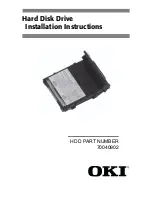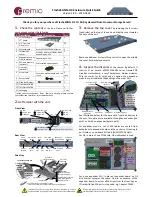
TAPEUTIL in HP-UX system environment
Introduction
A SCSI Tape and Medium Changer utility program that is called tapeutil is provided with the IBM SCSI
Tape and Medium Changer device driver for HP-UX. It is installed in the
/usr/bin
directory. The tapeutil
program fulfills several purposes:
• It provides the following service aids for IBM tape subsystems:
– Query Device Type/Verify Device Attachment
– Query Device Serial Number
– Query Device Microcode Level
– Force Device Diagnostic Dump
– Store Device Diagnostic Dump
– Download Device Microcode
• It provides a menu-driven test tool for exercising or testing IBM tape and medium changer devices with
a full suite of supported operations:
– Reading/Writing Data
– Tape Motion Commands
– Setting/Displaying Device Information/Status
– Mounting/Demounting Cartridges
– Cartridge Inventory
• In addition to the menu-driven front end, the tapeutil program provides a command-line interface that
is convenient for use in shell scripts.
• The source code for the tapeutil program is provided for example purposes, and is installed in the
tapeutil directory during the tapeutil package installation. This source code is commented and
demonstrates calls to all of the supported device driver entry points and ioctl commands. Thus, the
application developer has a starting point for interfacing to the HP-UX device driver.
The tapeutil program provides both an interactive menu-driven interface and a command-line interface.
If the tapeutil program is started with no command-line parameters, the menu-driven version is started.
In the menu-driven version, the device to be operated on is opened with option 1. Other options can then
be selected. The user is prompted for information if required for the specific options selected. The results
of a command are displayed after it is run. If an error occurs for the command, error information and
device sense data are displayed. The device can be closed with option 2, or it automatically closes when
the Quit option is selected. The menu is automatically displayed when the program is first started. To
prevent unnecessary scrolling of the screen, the menu is not automatically displayed again after each
command. Instead, it is refreshed only after the
M
(menu refresh) command is entered.
Interactive menu-driven interface
Figure 89 on page 270 shows the menu that is displayed by the tapeutil program when the program is
invoked, and no command-line parameters are entered:
©
Copyright IBM Corp. 2010, 2018
269
















































